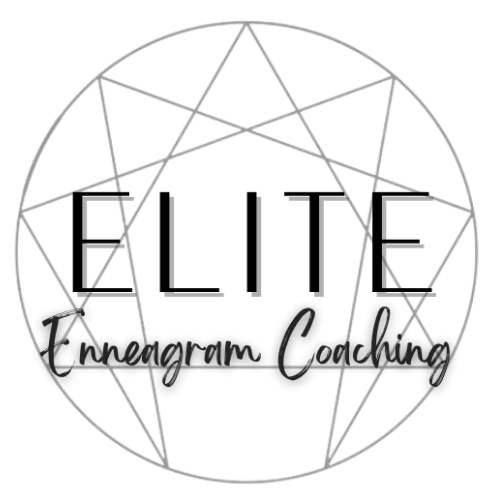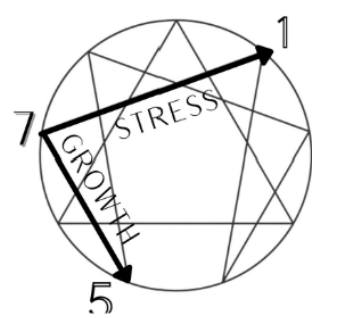What is the Enneagram? Enneagram types explained
The Enneagram is a powerful self-knowledge tool that suggests there are 9 different core motivations that make up the lens through which we view the world. Instead of allowing your Enneagram type define you, discover ways to release yourself from the patterns of thinking and behaving. Thus, living within your true essence instead of your learned personality.
The Enneagram System gives us many tools to help bring awareness to how we think, feel and behave. Each of us can feel truly seen and understood- but the goal isn’t to be placed into a box. The goal is to free yourself from the invisible box you’ve been living in (your type structure based off of your core motivations.)
The less you identify with your core fears and desires the more freedom you find. The more connected you get to the present moment and therefore yourself. This process is difficult and takes a pointed effort- which is why I have a job! I support clients in connecting with their core type and utilizing the awareness to go on a growth journey.
Useful Tools Offered by the Enneagram:
Core Motivations- First step in the process is to really take a look at how your core fears and desires are behind your actions. Noticing you have been driven by these for most of your life and you can make a choice to change that. Once you are more conscious of your choices and are not driven by your motivators you become more present minded and balanced.
Stress and growth Arrows- The types are interconnected by paths or arrows. These can be used to bring awareness to when you (or someone you know) is getting stressed. Growth arrows give you clarity into what attributes you need to lean into for personal growth.
Levels of Development-9 Levels of development ranging from unhealthy, average to healthy. Gives a synopsis of each type in their growth journey. What it may look like behavior/attitude wise and what core fear/desire arises at each level. These are created by Riso and Hudson of the Enneagram Institute. (To learn more schedule a “Get on My Level” Session with me. )
Instinctual Variants- Sometimes called Subtypes. These are the three instincts we all as humans biologically have. They drive us- and therefore can impact the way we show up in the world. The three instincts are social, sexual and self-preservation.
Stances- The enneagram is broken up into 3 stances. Assertive Types- 3,7 &8. Withdrawn Types- 4,5&9 and Dependent types 1,2&6. Knowing our stance can help us to understand how we go about getting our needs/desires met. It can support us in relating to others as well.
Conflict Reaction Styles- Competence (1, 3, 5) Logic and data- take out the emotions. Emotional Reactivity (4,6,8) feel the need to vent their feelings. Positive Outlook (2, 7 &9) take the approach of “everything is fine” even when it’s not.
Centers of Intelligence- We all have 3 centers of intelligence. Head- Thinking center, Heart- Emotions/feelings, Body- Instincts & action. Learning how to utilize and balance these centers is truly life changing.
Defense Mechanisms- Each type has a specific way they defend themselves subconsciously from the pain of feeling their core fears come true. When they feel triggered they deploy this mechanism- bringing awareness to this is quite the eye opener.
Wings-The types next to your type that you can use as resources to understand how you may behave differently in different settings.
Type 1 -
The moral Perfectionist
One's are driven to live in a perfect world and work dutifully to improve both themselves and everyone & everything around them. Extremely structured and self-controlled; believe there is almost always a right way to do things.
Core Fear: Being bad, evil, corrupt, or wrong.
Core Desire: Being good, pure, perfect, having integrity and doing the right thing.
Type 2-
The Supportive Helper
Want to be liked and believe they can get anyone to like them. Attempt to feel worthy and valued by offering gifts, attention, resources and advice to others. Attempt to orchestrate the people and events in their lives. Lose connection with what they themselves truly want and need.
Core Fear: being unwanted, unloved, dispensable, replaceable
Core Desire: being loved, wanted, appreciated (and sometimes, needed). They feel a need to be seen as kind, loving, and selfless
Type 3-
Successful Achiever
Desire to appear successful to gain the admiration of others. Organize their lives by focusing intensely on specific goals and plans, with a self-assured and confident demeanor and image; lose touch with their truest self and inner most heart's desire.
Core Fear: Failure, being exposed, invaluable or seen as worthless
Core Desire: Achievement and success in hopes to be seen as valuable admirable, and a role model
Type 4- The Romantic Individualist
Fours desire deep unbreakable connections both with their interior worlds and with other people. They feel most alive when they authentically express their feelings and personal experiences. Constantly trying to understand why they feel so different from everyone else.
Core Fear: Being defective, mundane, and insignificant
Core Desire: To find themselves, to be unique, and special, to live out their authentic identity
Type 5- The Thoughtful Observer
Fives want to obtain knowledge in the areas they perceive important & intriguing. They are always in their heads and seem emotionally detached and self-contained. The are private in order to conserve their energy and to not feel depleted by others.
Core Fear: Being incompetent, incapable, invaded
Core Desire: To be competent and capable, to be self-sufficient
Type 6-The Loyal Skeptic
Sixes are constantly scanning and planning to create a variety of anticipatory sets and be prepared for the worst. Counterphobic- May get more assertive in the face of fear or Phobic- may shrink from fear. Usually a mixture of both depends on the context.
Core Fear: To be safe and secure, to feel supported, stable, and grounded
Core Desire: Fear itself, being on their own without support or guidance
Type 7- The Enthusiastic Optimist
Sevens are quick thinking types that wish to experience what they believe will fulfill them. Whether that's sitting on the couch or trying a new restaurant. They rationalize feelings & convince others to do what it is they want. It's not about "control" its about getting their needs met. Feel extremely frustrated when they feel limited in any way.
Core Fear: Being deprived, trapped in emotional pain, limited, bored
Core Desire: To be truly satisfied, fulfilled, content
Type 8-The Protective Challenger
Eights seek truth, justice, and direct communication. They are big and bold in what they do- because they wish to have power and control over the situation. They take immediate action. You're either with them or against them, with not much space in between.
Core Fear: to be in control, strong, powerful in order to protect themselves
Core Desire: To be controlled, weak, harmed, manipulated, the victim of an injustice
Type 9-The Peaceful Mediator
Nines want peace, and harmony and for others to think of them positively. They feel that they are good and ok if everyone around them is good and ok. Nines see all perspectives in a situation and struggle to communicate their own opinions in fear of separation or a wedge being placed between them and others. They have extreme sensitivity to conflict because it is uncomfortable and messes with their peace.
Core Fear: Conflict, being overlooked or dismissed, loveless, separated, and unaccepted
Core Desire: Inner peace, serenity and to be at ease or comfortable











